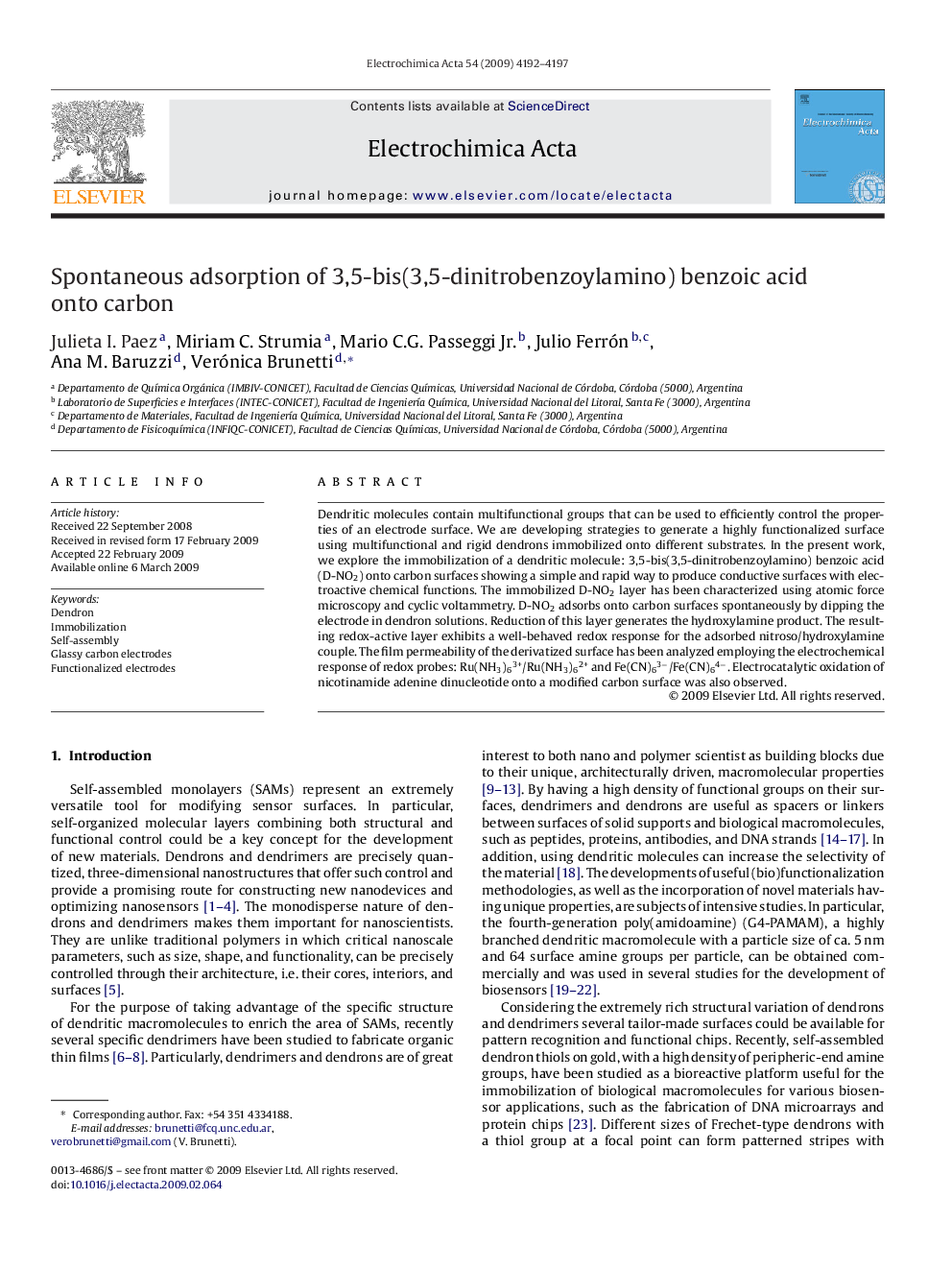| کد مقاله | کد نشریه | سال انتشار | مقاله انگلیسی | نسخه تمام متن |
|---|---|---|---|---|
| 192909 | 459755 | 2009 | 6 صفحه PDF | دانلود رایگان |

Dendritic molecules contain multifunctional groups that can be used to efficiently control the properties of an electrode surface. We are developing strategies to generate a highly functionalized surface using multifunctional and rigid dendrons immobilized onto different substrates. In the present work, we explore the immobilization of a dendritic molecule: 3,5-bis(3,5-dinitrobenzoylamino) benzoic acid (D-NO2) onto carbon surfaces showing a simple and rapid way to produce conductive surfaces with electroactive chemical functions. The immobilized D-NO2 layer has been characterized using atomic force microscopy and cyclic voltammetry. D-NO2 adsorbs onto carbon surfaces spontaneously by dipping the electrode in dendron solutions. Reduction of this layer generates the hydroxylamine product. The resulting redox-active layer exhibits a well-behaved redox response for the adsorbed nitroso/hydroxylamine couple. The film permeability of the derivatized surface has been analyzed employing the electrochemical response of redox probes: Ru(NH3)63+/Ru(NH3)62+ and Fe(CN)63−/Fe(CN)64−. Electrocatalytic oxidation of nicotinamide adenine dinucleotide onto a modified carbon surface was also observed.
Journal: Electrochimica Acta - Volume 54, Issue 17, 1 July 2009, Pages 4192–4197